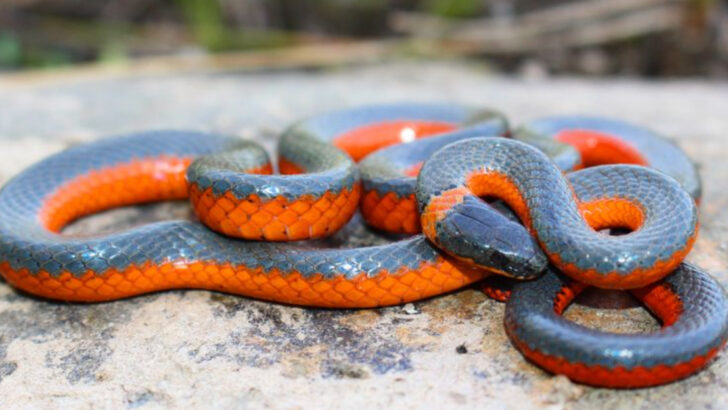California isn’t just sunshine and surfboards—it’s also home to some seriously slithery surprises.
Beneath the hiking trails, sunbaked rocks, and peaceful gardens, snakes are silently watching, soaking up the heat, and sometimes stealing the show. Some are harmless charmers, gliding through the brush like silent ghosts. Others? Not so cuddly.
Five of them pack venom strong enough to turn a casual stroll into a trip to the ER.
Whether you’re a thrill-seeker, nature lover, or just want to know what’s lurking in your backyard, this list of 19 snakes in California is your ultimate field guide. Let’s peek under the rocks—carefully.
California Kingsnake

The California Kingsnake, with its striking black and white bands, is one of the most commonly seen snakes in California. Known for its beauty and calm demeanor, it’s often found in a variety of habitats, from coastal forests to arid deserts. Surprisingly, this non-venomous snake is a powerful constrictor, preying on rodents, birds, and even other snakes, including rattlesnakes. Its adaptability allows it to thrive in urban areas, making it a frequent backyard visitor.
Northern Pacific Rattlesnake
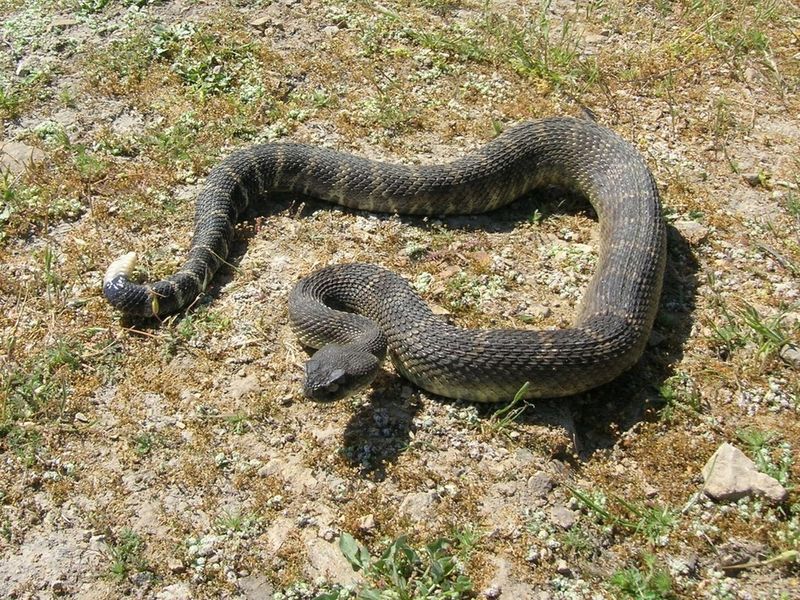
The Northern Pacific Rattlesnake is a venomous snake that commands respect. Easily identified by its triangular head and distinctive rattle, it inhabits rocky hillsides and open fields. When threatened, it will shake its rattle as a warning before striking. Its venom is potent, capable of causing serious harm to humans, so it’s essential to maintain a safe distance. Despite its fearsome reputation, the Northern Pacific Rattlesnake plays a crucial role in controlling rodent populations.
Gopher Snake
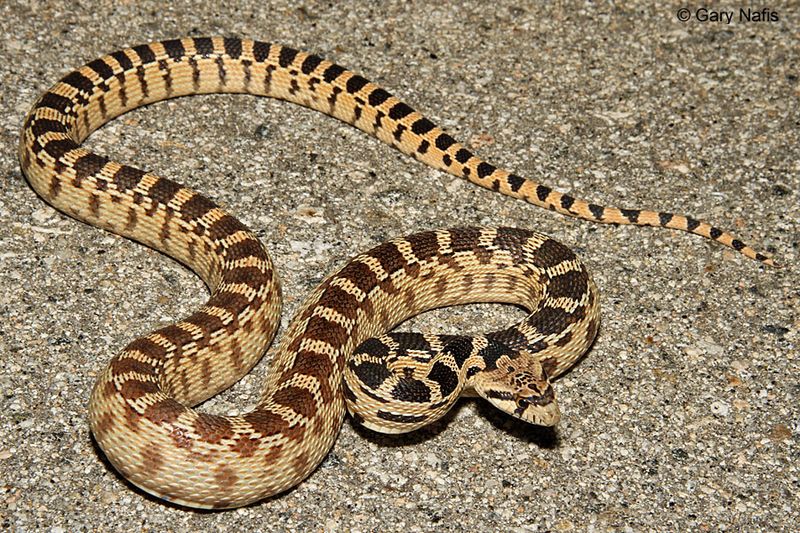
The Gopher Snake is a master of disguise, often mistaken for a rattlesnake due to its similar appearance and defensive behavior. Non-venomous and beneficial, it helps control rodent populations. When threatened, it flattens its head and hisses, creating a convincing mimicry of a venomous rattlesnake. Found across varied habitats, from forests to grasslands, its adaptability and impressive mimicry make it a fascinating snake to observe in the wild.
Western Diamondback Rattlesnake
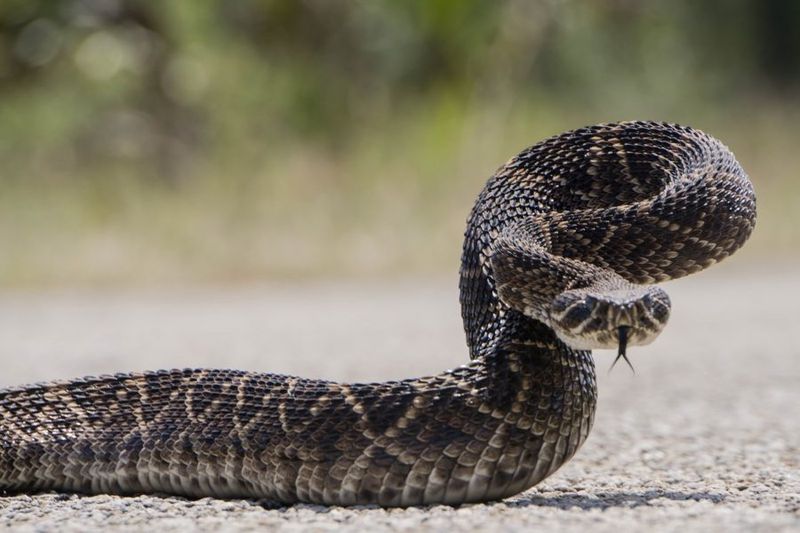
The Western Diamondback Rattlesnake is a formidable presence in the Californian landscape. Known for its distinctive diamond-shaped patterns and potent venom, it prefers arid and semi-arid regions. This snake is quick to defend itself and will rattle vigorously when threatened. Its bite can be dangerous, necessitating caution. However, it plays an essential ecological role by controlling the populations of small mammals, making it an integral part of the ecosystem.
Rosy Boa
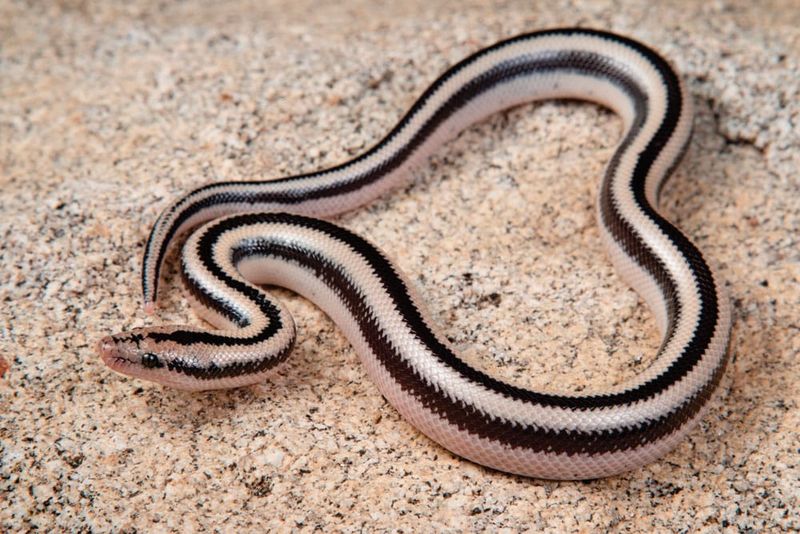
The Rosy Boa, with its smooth, pinkish skin, is one of the most beautiful snakes you might encounter. Known for its gentle nature, this non-venomous snake prefers rocky outcrops and desert landscapes. It’s a slow-moving creature, feeding primarily on small mammals and birds. The Rosy Boa’s docile temperament makes it a favorite among reptile enthusiasts. Despite its mild demeanor, it plays a vital role in its habitat by keeping the rodent population in check.
Western Yellow-bellied Racer
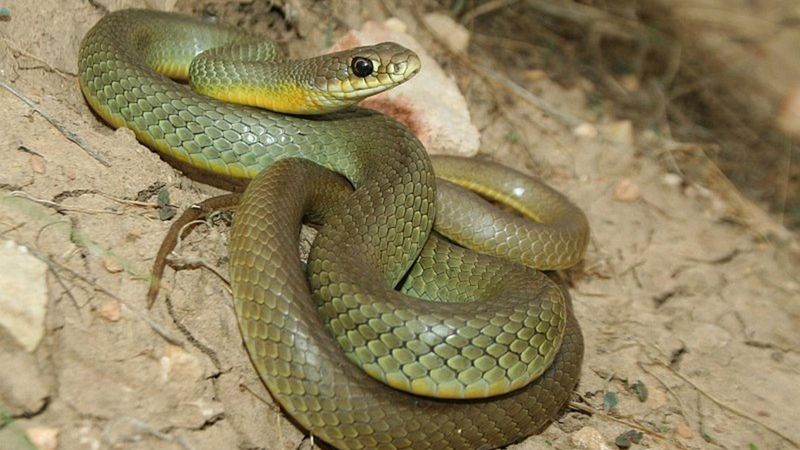
The Western Yellow-bellied Racer is a sleek, fast-moving snake, easily recognized by its slender body and yellow underside. Preferring open fields and meadows, it can be spotted swiftly moving through grasslands. Non-venomous, it poses no threat to humans and primarily preys on insects and small rodents. Its agility and speed make it a fascinating sight for nature lovers. Observing this swift serpent in action can be a thrilling experience for any wildlife enthusiast.
Red Coachwhip

The Red Coachwhip is an incredibly fast and agile snake, known for its striking red coloration and long, slender body. It inhabits open areas and deserts, where it hunts down lizards and small mammals with remarkable speed. This non-venomous snake is a bit shy and tends to avoid human contact, making sightings relatively rare. Its vibrant color and swift movements make it a fascinating snake to observe in its natural habitat.
Southern Pacific Rattlesnake
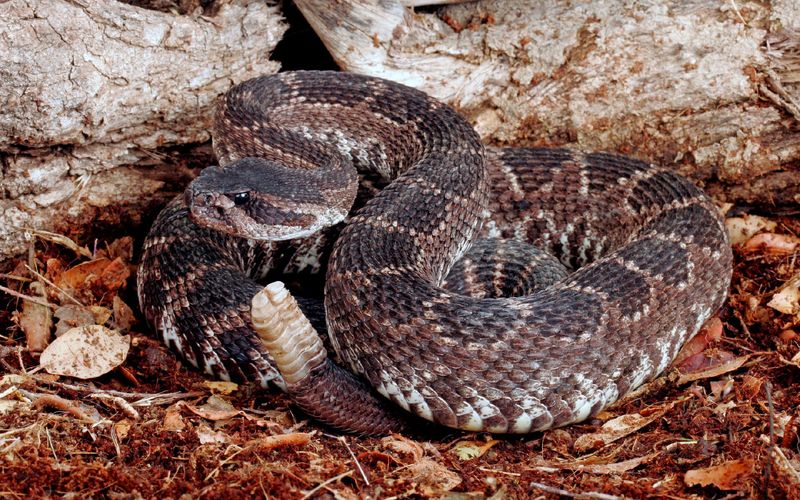
The Southern Pacific Rattlesnake is another venomous species found in California, particularly in the southern regions. It can be identified by its distinctive rattle and dark color patterns. Often encountered in chaparral and rocky areas, it relies on its rattle to warn intruders. Though its venom is less potent than some rattlesnakes, caution is still advised. This snake plays a vital role in its ecosystem, helping to control the populations of small rodents.
Ring-necked Snake
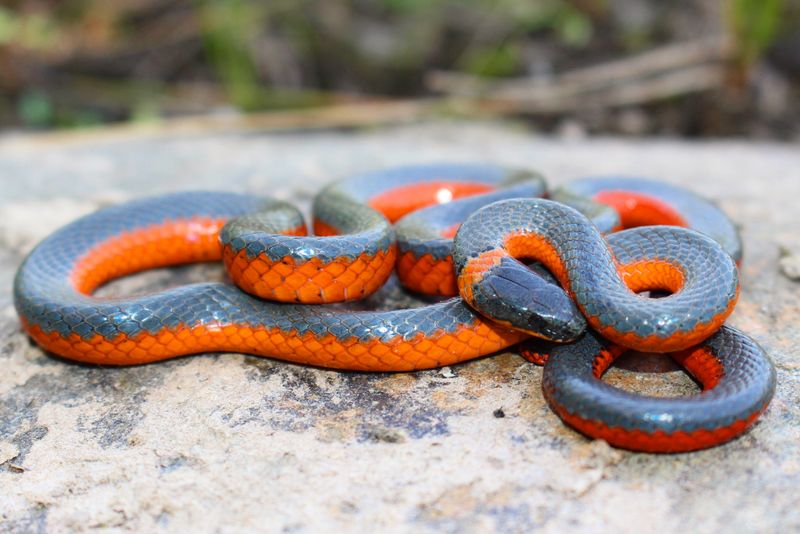
The Ring-necked Snake is a small, secretive serpent with a distinctive orange ring around its neck. Found in moist environments like woodlands and near streams, it’s non-venomous and poses no threat to humans. Its diet consists mainly of small insects and amphibians. Though elusive, this snake’s unique coloration and shy behavior make it a delightful find for keen-eyed observers exploring California’s diverse habitats.
Long-nosed Snake
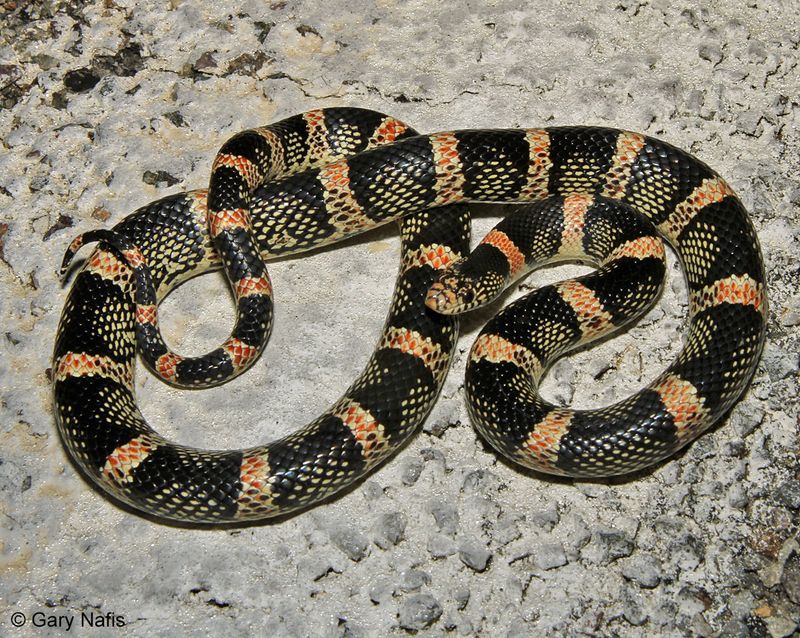
The Long-nosed Snake is easily identified by its pointed snout and colorful patterns. Preferring arid and semi-arid regions, it is often found in sandy or rocky habitats. This non-venomous snake is harmless to humans and feeds primarily on lizards and small rodents. Its unique appearance and preference for dry climates make it a fascinating species to encounter in California’s diverse landscapes. Its distinctive features and intriguing behaviors capture the curiosity of many snake enthusiasts.
Two-striped Garter Snake
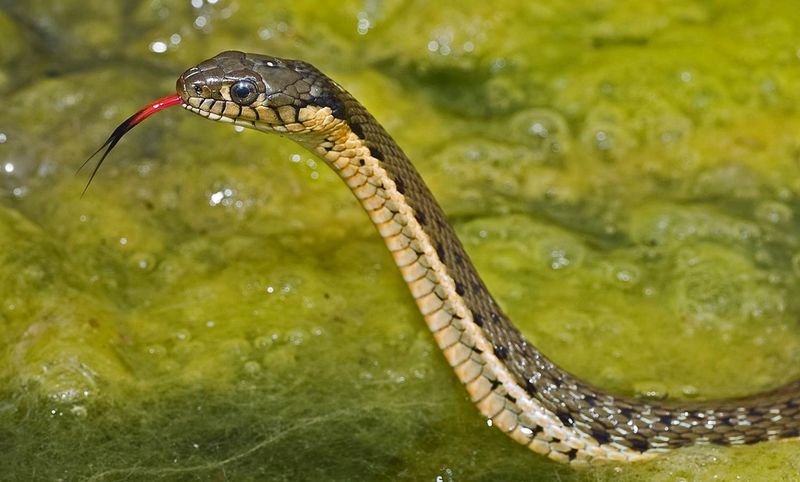
The Two-striped Garter Snake is a striking reptile, easily recognized by its two distinct stripes running along its body. Found near water sources like ponds and streams, it’s non-venomous and poses no danger to humans. This snake primarily feeds on amphibians and small fish. Its vibrant coloration and affinity for aquatic habitats make it a fascinating creature to observe. Spotting this snake in its natural environment is a treat for wildlife enthusiasts exploring California.
Rubber Boa
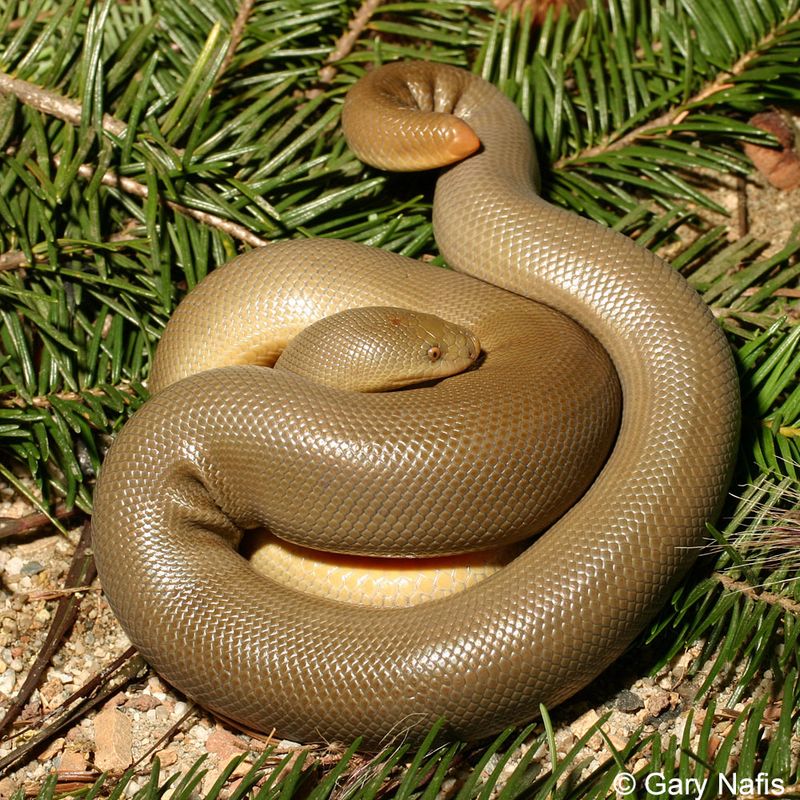
The Rubber Boa is a small, gentle snake with a smooth, rubbery texture to its skin. Found in cooler forested areas, it’s non-venomous and poses no threat to humans. This snake feeds on small mammals and is known for its docile nature, often curling into a ball when threatened. Its unique texture and gentle demeanor make it a favorite among reptile enthusiasts. The Rubber Boa’s presence in California adds to the state’s rich diversity of snake species.
Coachwhip
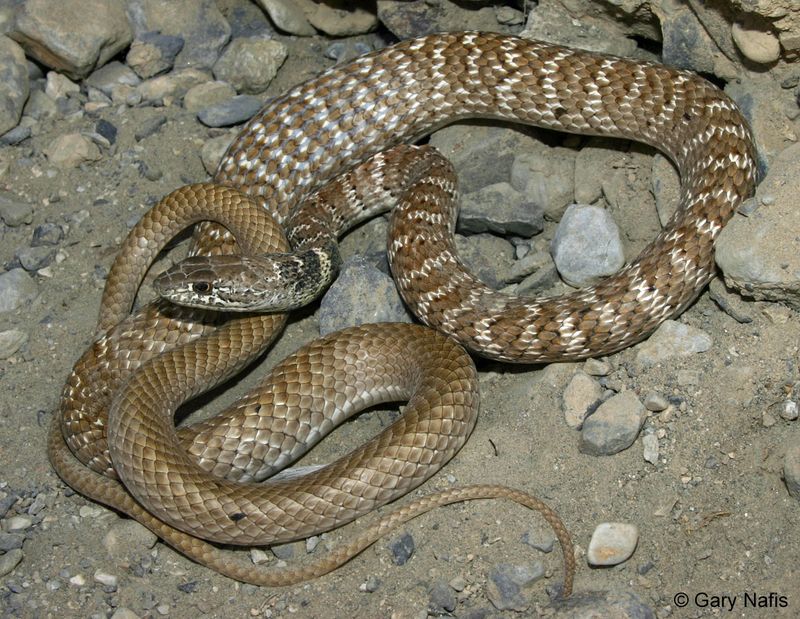
The Coachwhip is a long, slender snake known for its incredible speed and agility. Inhabiting open areas and deserts, it’s non-venomous but will actively defend itself if cornered. Its diet consists mainly of lizards, small mammals, and occasionally birds. The Coachwhip’s ability to move swiftly across the terrain makes it a sight to behold, captivating those lucky enough to witness its grace in the wild. It thrives in the warm Californian climate, adding to the region’s vibrant snake population.
Mojave Rattlesnake

The Mojave Rattlesnake is notorious for its potent venom, making it one of the most dangerous snakes in California. Identified by its light and dark diamond pattern and distinctive rattle, it prefers arid desert regions. This snake’s venom is a potent mix, capable of causing severe symptoms in humans, so caution is paramount. Despite its fearsome reputation, the Mojave Rattlesnake plays an essential role in controlling the populations of small mammals, contributing to the ecological balance.
Striped Racer
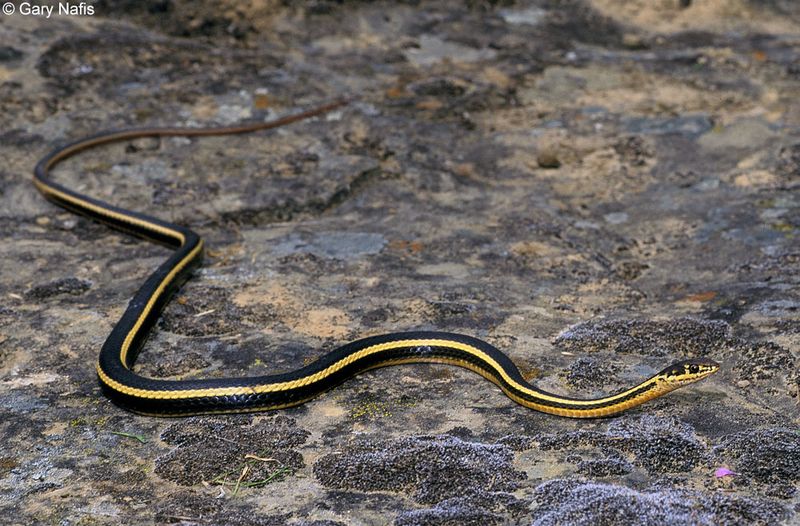
The Striped Racer is a swift and agile snake, known for its distinctive longitudinal stripes that serve as excellent camouflage among the grasses. Preferring open woodlands and scrublands, it is non-venomous and primarily feeds on lizards and small mammals. Its rapid movements and striking appearance make it a captivating sight in the wild. Observing the Striped Racer in its natural habitat provides a glimpse into its fascinating behaviors and the intricate ecosystem it inhabits.
California Lyresnake
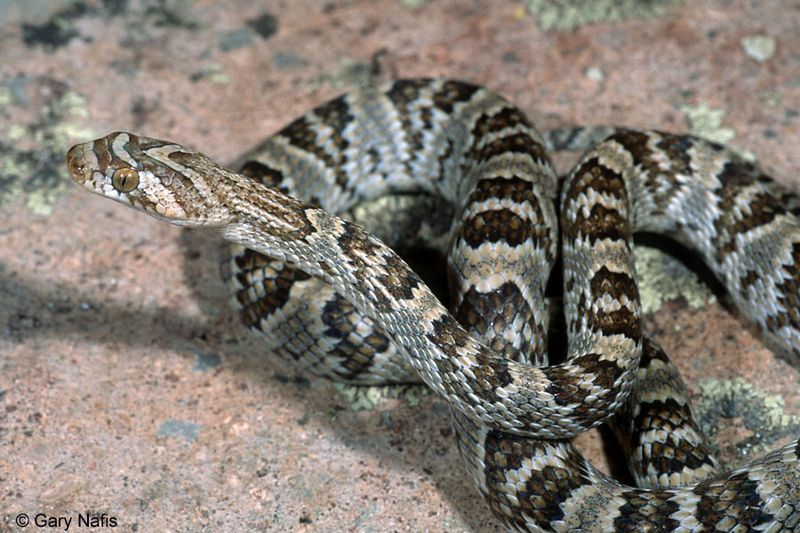
The California Lyresnake is a nocturnal hunter, known for the subtle lyre-shaped markings on its head. Found primarily in rocky terrain, it preys on lizards and small mammals. This mildly venomous snake poses little threat to humans, but its secretive nature makes sightings rare. With its unique appearance and nocturnal habits, the California Lyresnake is a fascinating subject for those intrigued by the hidden aspects of California’s wildlife. Its presence adds a mysterious allure to the state’s biodiversity.
San Diego Gopher Snake
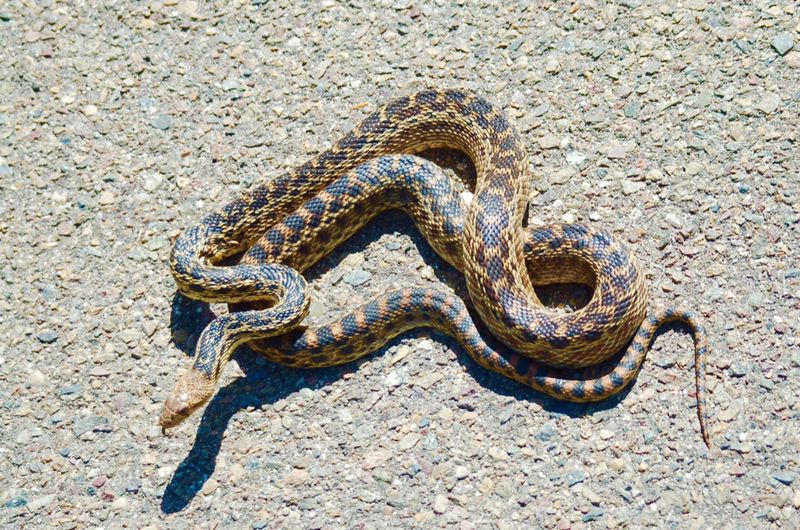
The San Diego Gopher Snake is a master mimic, often confused with the rattlesnake due to its defensive displays. Non-venomous and beneficial, it helps control rodent populations. When threatened, it flattens its head and vibrates its tail, creating a convincing mimicry. Found across varied habitats, its adaptability and impressive mimicry make it a fascinating snake to observe. This snake’s role in controlling pests adds significant ecological value, making it a vital part of California’s natural landscape.
Speckled Rattlesnake
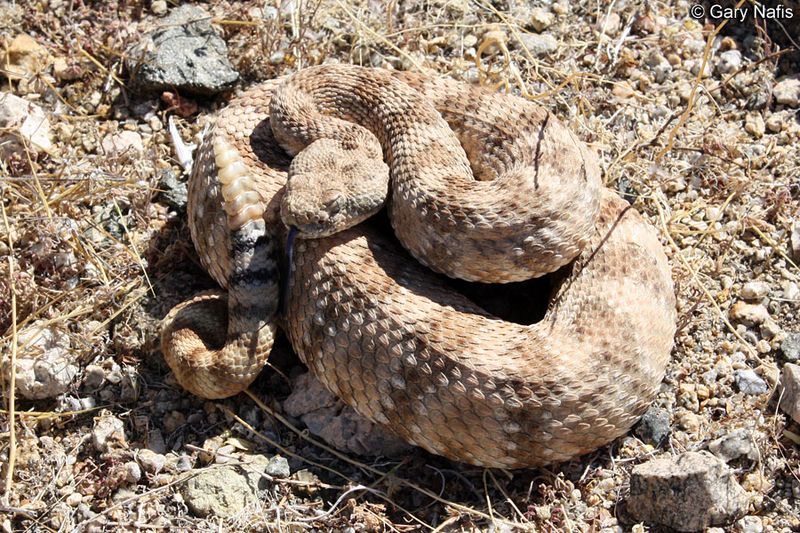
The Speckled Rattlesnake boasts a unique camouflage, blending seamlessly with its rocky desert surroundings. Known for its speckled pattern, it can be difficult to spot in its natural habitat. This venomous snake’s bite can be dangerous, so caution is essential when exploring desert areas. Despite its potential danger, the Speckled Rattlesnake is an integral part of the ecosystem, preying on small mammals and maintaining ecological balance.
Desert Night Snake
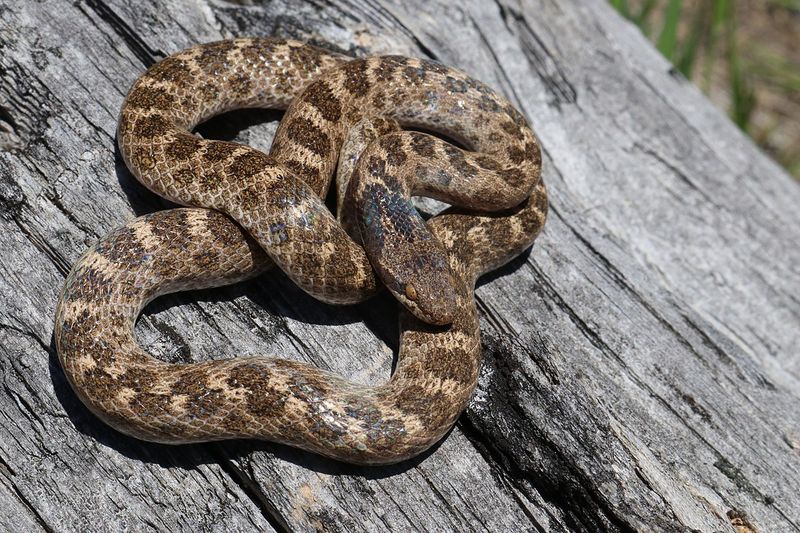
The Desert Night Snake is a small, nocturnal serpent with subtle coloration that aids in its nighttime hunting. Found in arid regions, it preys on lizards and small insects. Mildly venomous, it poses little threat to humans. This snake’s elusive nature and preference for the cover of night make it a rare sight. Observing the Desert Night Snake in its natural habitat offers a glimpse into the secretive life of California’s nocturnal wildlife, highlighting the state’s rich biodiversity.

